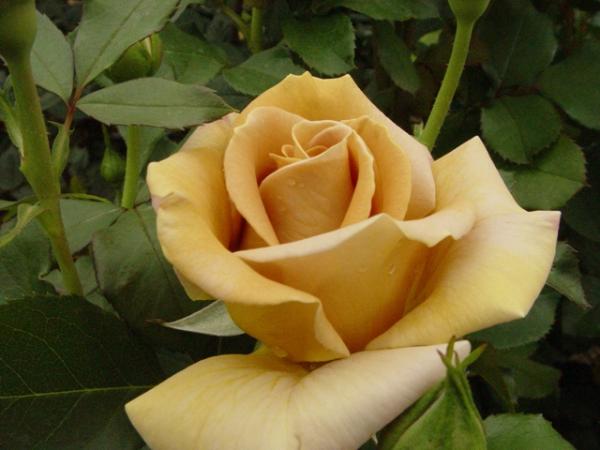Array
(
[0] => Array
(
[id] => 486
[is_published] => 1
[websiteID] => 5
[url] => /landscaping/bullet-proof-landscape-plants.php
[page_status] => Published
[number_of_ads] => 1
[can_use_editor] => 1
[last_modified_date] => 2013-09-18 00:00:00
[last_modified_by] => Alan
[checked_for_duplicate_content] =>
[title] => Bulletproof landscape plants
[heading] => Bulletproof landscape plants
[meta_description] => Not all plants are equal. Many require the soil and climate (amongst other things) to be 'just right'. The plants described in this article are the ones that deserve the title of 'bulletproof' and are a good starting point for an easy-care garden.
[article_category_1] => Landscaping
[article_category_2] =>
[article_category_3] =>
[article_category_4] =>
[article_category_5] =>
[business_category_1] => Landscaper
[business_category_2] => Garden Maintenance
[business_category_3] => Garden Supplies
[business_category_4] => Garden Designer
[business_category_5] => Garden Tools
[number_of_google_mrecs] => 1
[show_google_ad_bottom_of_page] => 1
[show_get_quotes_top_of_page] => 1
[show_get_quotes_rhs_of_page] => 1
[show_directory_search_widget] => 1
[show_trending_content_widget] => 1
[show_facebook_widget] => 1
[show_further_reading_section] => 1
[show_sponsors_section] => 1
[show_top_article_ad] => 1
)
[1] => Array
(
[id] => 130
[is_published] => 1
[websiteID] => 5
[url] => /landscaping/diy-australian-landscaping.php
[page_status] => Published
[number_of_ads] => 4
[can_use_editor] => 1
[last_modified_date] => 2013-09-10 00:00:00
[last_modified_by] => Alan
[checked_for_duplicate_content] =>
[title] => DIY Australian landscaping
[heading] => DIY Australian landscaping
[meta_description] => Read this informative article and learn how to create a uniquely Australian landscape or garden.
[article_category_1] => Landscaping
[article_category_2] =>
[article_category_3] =>
[article_category_4] =>
[article_category_5] =>
[business_category_1] => Landscaper
[business_category_2] => Nursery
[business_category_3] => Garden Designer
[business_category_4] => Landscape Architect
[business_category_5] =>
[number_of_google_mrecs] => 0
[show_google_ad_bottom_of_page] => 1
[show_get_quotes_top_of_page] => 1
[show_get_quotes_rhs_of_page] => 1
[show_directory_search_widget] => 1
[show_trending_content_widget] => 1
[show_facebook_widget] => 1
[show_further_reading_section] => 1
[show_sponsors_section] => 0
[show_top_article_ad] => 1
)
[2] => Array
(
[id] => 453
[is_published] => 1
[websiteID] => 5
[url] => /gardening/growing-grevilleas.php
[page_status] => Published
[number_of_ads] => 10
[can_use_editor] => 1
[last_modified_date] => 2013-09-16 00:00:00
[last_modified_by] => Alan
[checked_for_duplicate_content] =>
[title] => Growing Grevilleas
[heading] => Growing Grevilleas
[meta_description] => Learn how to grow grevilleas in your garden.
[article_category_1] => Gardening
[article_category_2] =>
[article_category_3] =>
[article_category_4] =>
[article_category_5] =>
[business_category_1] => Landscaper
[business_category_2] => Nursery
[business_category_3] => Garden Designer
[business_category_4] => Landscape Architect
[business_category_5] =>
[number_of_google_mrecs] =>
[show_google_ad_bottom_of_page] =>
[show_get_quotes_top_of_page] =>
[show_get_quotes_rhs_of_page] =>
[show_directory_search_widget] =>
[show_trending_content_widget] =>
[show_facebook_widget] =>
[show_further_reading_section] => 1
[show_sponsors_section] => 0
[show_top_article_ad] => 1
)
[3] => Array
(
[id] => 410
[is_published] => 1
[websiteID] => 5
[url] => /articles/external-privacy-screens.php
[page_status] => Published
[number_of_ads] => 2
[can_use_editor] => 1
[last_modified_date] => 2013-09-10 00:00:00
[last_modified_by] => Alan
[checked_for_duplicate_content] =>
[title] => External privacy screens
[heading] => External privacy screens
[meta_description] => External privacy screens began to appear in Australian residential and commercial building during the 1950's and 1960's, as a direct result of high density living and higher incomes. For more information and some examples read this article.
[article_category_1] => Landscaping
[article_category_2] =>
[article_category_3] =>
[article_category_4] =>
[article_category_5] =>
[business_category_1] => Landscaper
[business_category_2] => Nursery
[business_category_3] => Garden Designer
[business_category_4] => Landscape Architect
[business_category_5] =>
[number_of_google_mrecs] => 1
[show_google_ad_bottom_of_page] => 1
[show_get_quotes_top_of_page] => 1
[show_get_quotes_rhs_of_page] => 1
[show_directory_search_widget] => 1
[show_trending_content_widget] => 1
[show_facebook_widget] => 1
[show_further_reading_section] => 1
[show_sponsors_section] => 1
[show_top_article_ad] => 1
)
)
Helpful articles
Bulletproof landscape plants. Not all plants are equal. Many require the soil and climate (amongst other things) to be 'just right'. The plants described in this article are the ones that deserve the title of 'bulletproof' and are a good starting point for an easy-care garden.
DIY Australian landscaping. Read this informative article and learn how to create a uniquely Australian landscape or garden.
Growing Grevilleas. Learn how to grow grevilleas in your garden.
External privacy screens. External privacy screens began to appear in Australian residential and commercial building during the 1950's and 1960's, as a direct result of high density living and higher incomes. For more information and some examples read this article.
Plant description
The 'Honey Dijon' rose variety has a most uncommon colour in roses, being a warm honey colour. This variety has a natural vigour and abundant bloom. Expect deeper colours in cooler weather with a tendancy to pinking on outer petals. 'Honey Dijon' won a Bronze Medal at the 2005 National Rose Trials. If you like Julia's Rose you'll love Honey Dijon.
To learn more about roses and how to care for them read this article: The Rose
Additional plant information
Flowers
Flower colour: yellow
Flowering season: spring summer autumn
Scent
Honey Dijon has a strong perfume
Plant size
Maximum height: 1.8 metres
Minimum height: 1.4 metres
Maximum width: not specified
Minimum width: not specified
Sunlight, frost & salt tolerance
This plant will tolerate full sunlight.
Medium frost tolerance.
Plant is not salt tolerant.
Fauna attracting?
Yes. Attracts: Insects.
Climate
This plant species will grow in the following climates: cool, temperate, subtropical.
Soil types & conditions
Loam: moist, well-drained.
Clay: moist, well-drained.
Sand: moist.
Soil pH: 5.5-7
Diseases
Black spot, powdery mildew
Pests
Scale, thrips, aphids
Miscellaneous information
Planting season: Winter if bare rooted, all seasons if potted.
Types of fertiliser: Rose fertiliser, or a good general purpose fertiliser.
Find a nursery
Search for another plant

